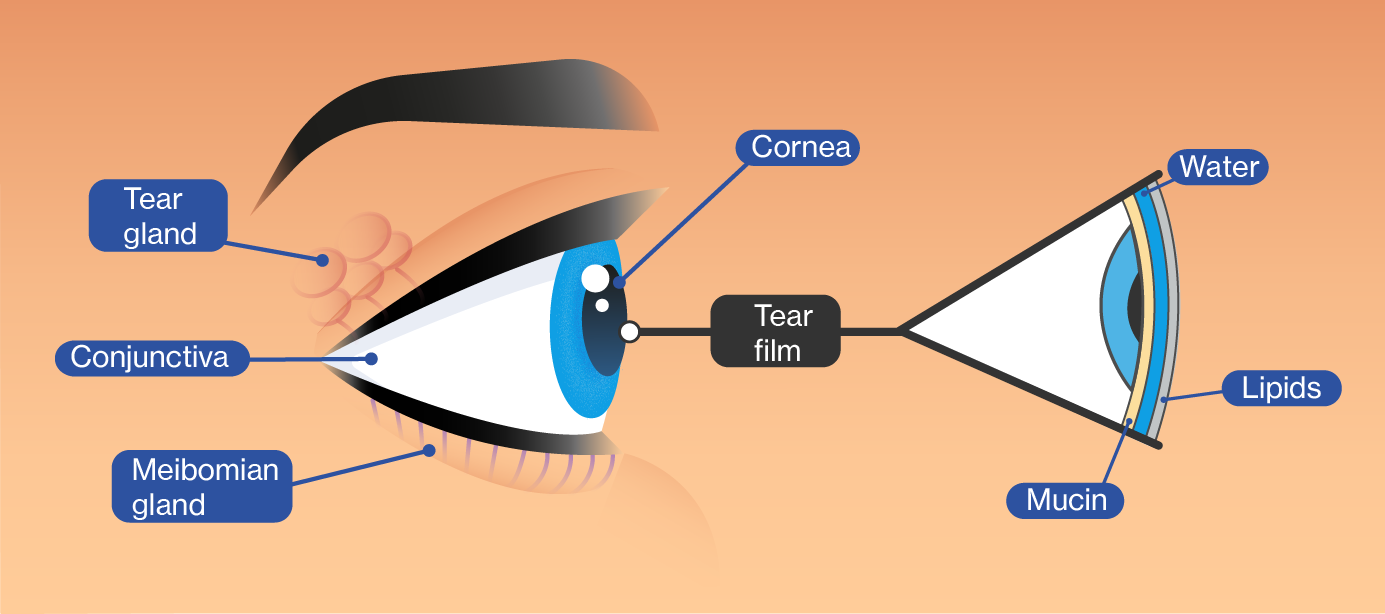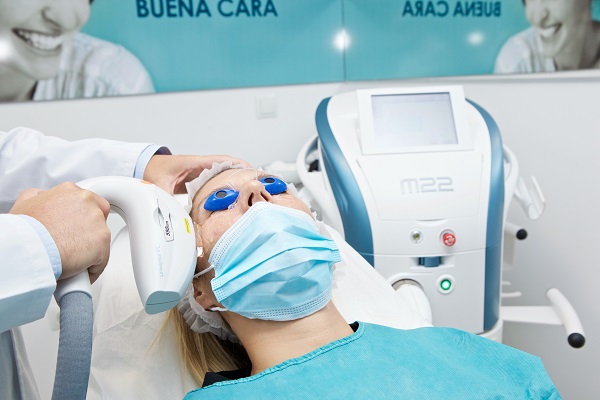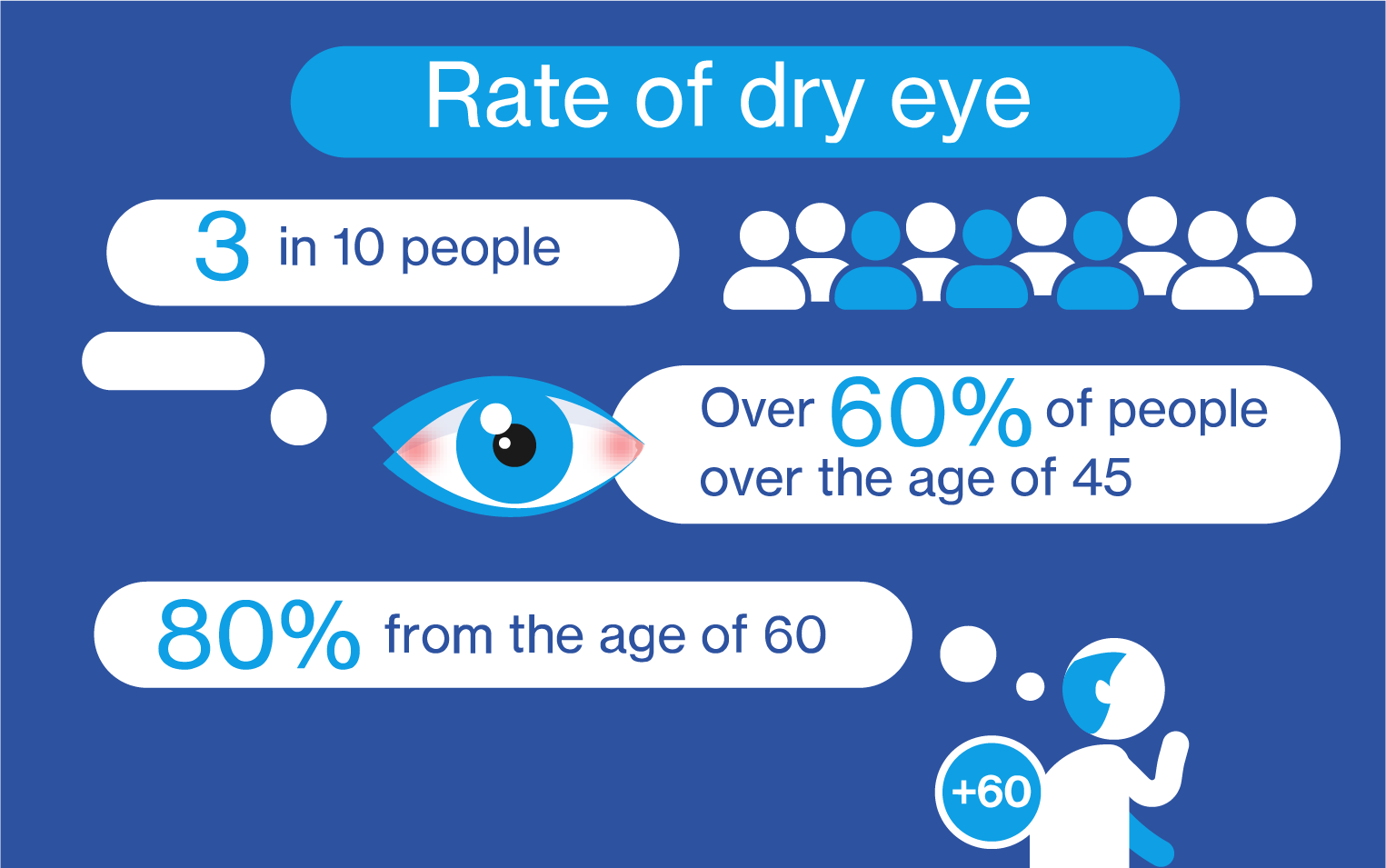Dry eye / Dry Eye
What is dry eye?
Dry eye is an eye disease caused by an alteration in the tear film, either due to insufficient tear production (hyposecretory dry eye) or by producing a poor quality tear (evaporative dry eye).
This can be related to different situations such as the intake of certain medications (antihypertensives, anxiolytics, antihistamines), some autoimmune or rheumatological disease, hormonal changes in women, previous eye surgeries, prolonged use of contact lenses, tobacco, stress and many others, which makes dry eye disease a pathology with a multiple etiology and this makes its treatment difficult.
Around 80% of the cases of dry eye are evaporative, caused by an alteration of some glands that we find in the thickness of the eyelids called Meibomian glands, which are in charge of providing the tear with a lipid layer that gives it stability and makes it difficult to evaporate. This alteration of the tear film is going to be a problem since the tear is in charge of nourishing, humidifying and lubricating the surface of the eye. Sits under the eyelids and works like machine oil to gently pass the blink over the eye without scratching or damaging it.

Composition of the tear film and meibomian glands.
Symptoms of dry eye
Some symptoms that may indicate dry eye syndrome, other than eye dryness itself, include:
→ A burning sensation.
→ An itching sensation: in the eyes.
→ Redness.
→ Sensation of sand in the eye.
→ Difficulty carrying out everyday tasks, such as reading, driving or focusing on a TV screen.
→ You may also notice blurry vision or excessive sensitivity to light.
→ Watery eyes, as the dryness on the surface of the eyes will overstimulate production of the aqueous component of tears, as a protection mechanism.
→ Heavy eyelids.
→ Photophobia (excessive light sensitivity)
→ Eye strain.
→ Dry eye can also lead to inflammation and pain.
Remember the importance of early diagnosis if you have any of these symptoms.
You should visit your ophthalmologist immediately if you have any of these symptoms, as it may be difficult to diagnose and treat due to the wide range of factors than can cause it. Your ophthalmologist will therefore need to perform a comprehensive examination to determine the causes of your symptoms and the extent of the dry eye.

Causes for dry eye syndrome
Dry eye is currently one of the most common causes or urgent reasons for patients go to an ophthalmology service, due to the discomfort it can cause, which can really affect the quality of life of patients who suffer from it, depending on the severity.
There are multiple factors that cause the appearance of a dry eye disease:
• Skin conditions: acne rosacea.
• Allergies.
• Rheumatic diseases: antidepressants, antihistamines or contraceptive medication, among others.
• Medication intake: antidepressants, anxiolytics, antihistamines, antihypertensives or contraceptives, among others.
• Hormonal changes: menopause.
• Smoking.
• Having previously undergone eye surgery.
• Using contact lenses incorrectly which may even lead to a corneal ulcer.
• Using an electronic device very often could cause your tears to evaporate more quickly.
• Aging.
• Indoor environments (air-conditioning, heating systems) and outdoor environments (primarily dry climates with low levels of humidity and a lot of wind).
• Travelling regularly by plane: the air in an airplane cabin is very dry.
• Eyelid disorders: such as blepharitis, ptosis, lagophthalmos which can cause severe dry eye.
Air pollution also affects dry eye
High levels of air pollution are related to various health problems, largely respiratory issues. According to the World Health Organisation (WHO), the high concentration of pollution in the air contains particulate matter, ozone, nitrogen dioxide and sulphur dioxide.
As a result, the lack of humidity and the increase in air pollution, caused by car exhaust fumes and chemical compounds from factories, contributes towards an increase in eye inflammation and the appearance of dry eye.

Frequently asked questions
→ Does dry eye only occur in one eye?
No, in fact it is common to suffer from dry eye in both eyes. However, it is possible to suffer from asymmetrical dry eye, meaning you have discomfort in one eye but not the other.
→ What kind of contact lenses should I use if I have dry eye?
→ Can dry eye be cured?
→ Can dry eye cause watery eyes?
→ Which disorders can cause dry eye?
→ Which medications can cause dry eye?
→ Are there any natural remedies for dry eye?
→ How can I relieve dry eye syndrome?



